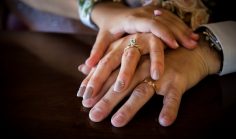Bipolar disorder is most commonly treated with mood stabilizers. Antipsychotics and antidepressants can be prescribed along with mood stabilizers to help further control symptoms.
Medication
Mood stabilizers have been clinically shown to successfully reduce the severity of manic/depressive symptoms. They work by affecting communication within the nervous system to limit brain activity that leads to manic/depressive behaviors. Mood stabilizers often take several weeks for their full effects to be observed. They are most effective when distributed throughout the body at an optimal level, which can take several weeks of close blood monitoring to arrive at. Do not alter your medication regimen without first talking to your doctor. These include:
Lithium (Eskalith, Eskalith CR, Lithobid). After being approved by the FDA in the 1970s for the treatment of both manic episodes and depressive episodes, lithium established itself as a primary medication for the treatment of bipolar disorder. Researchers are still unsure of why this naturally occurring element works as an effective treatment for bipolar disorder. The effects of lithium typically do not begin to take effect until about two weeks after the initial dose, with full effects emerging three to six weeks after the initial dose. It works best for those who experience euphoric mania (as opposed to mixed mania or anxious mania), and about 50% of the patients who take lithium notice an improvement in their condition. The FDA warns that because lithium toxicity can occur at therapeutic doses, lithium therapy must be monitored with blood tests. Women who are pregnant or breastfeeding should not take lithium due to the risk of birth defects. According to researchers at the University of South Florida, a safer form of lithium called lithium salicylate is on the horizon. Findings on the new drug were published in the March 2014 issue of RSC Advances, the journal of the Royal Society of Chemistry.
Side effects of lithium include:
- Excessive thirst
- Loss of coordination
- Frequent urination
- Blackouts
- Seizures
- Slurred speech
- Fast, slow, irregular, or pounding heartbeat
- Hallucinations (seeing things or hearing voices that do not exist)
- Changes in vision
- Itching, rash
- Swelling of the eyes, face, lips, tongue, throat, hands, feet, ankles, or lower legs.
Anticonvulsant medications were originally developed to treat seizures but were found to help control moods as well. These include:
- Valproic acid, also called divalproex sodium (Depakote)
- Carbamazepine (Tegretol)
- Lamotrigine (Lamictal)
- Oxcarbazepine (Trileptal).
Anticonvulsants can have serious side effects, including:
- Changes in weight
- Nausea
- Stomach pain
- Vomiting
- Anorexia
- Drowsiness
- Insomnia
- Loss of appetite
- Loss of vision
- Loss of coordination
- Damage to the liver or pancreas
- Increased risk of suicidal thoughts and behaviors.
- An increase in testosterone levels in teenage girls leading to a condition called polycystic ovarian syndrome disease that can affect fertility and make the menstrual cycle become irregular (Valproic acid ONLY)
- Increased risk for ovarian cysts
- A rare but serious skin rash that can cause permanent disability or be life-threatening. (Lamotrigine ONLY)
If you experience any increased symptoms of depression or suicidal thoughts or behaviors, talk to your doctor as soon as possible. If you are contemplating suicide, call 1-800-273-TALK for immediate support.
Atypical antipsychotics can be used in combination with mood stabilizers to treat symptoms of bipolar disorder. Initially, these were thought only to treat psychosis, a symptom of other mental disorders such as schizophrenia. Atypical antipsychotics used to treat bipolar disorder include:
- Olanzapine (Zyprexa)
- Aripiprazole (Abilify)
- Risperidone (Risperdal)
- Ziprasidone (Geodon)
- Clozapine (Clorazil)
- Lurasidone (Latuda)
Mild side effects of atypical antipsychotics include:
- Weight gain is an almost certain side effect of atypical antipsychotics. Individuals taking atypical antipsychotics should be careful to monitor their diet and exercise regularly.
- Drowsiness is the second most common side effect.
Serious side effects of atypical antipsychotics include:
- Diabetes
- Increased risk for heart disease
- High cholesterol
- Muscular dysfunction (i.e. inability to move muscles, involuntary muscle spasms)
- Sexual dysfunction (low libido, erectile dysfunction, inability to orgasm)
- Increased risk for cataracts
SSRI Antidepressants are sometimes used to treat symptoms of depression in bipolar disorder, however people with bipolar disorder should not take an antidepressant on its own because doing so can cause the person to switch rapidly from depression to mania. Doctors typically prescribe an antipsychotic along with an antidepressant for patients with bipolar disorder. Recent studies suggest that antidepressants are not as effective in treating individuals with bipolar as initially thought. A study funded by the National Institute of Mental Health found that antidepressants were no more effective than a placebo to help treat depression in people with bipolar disorder. Use of antidepressants as treatment for bipolar disorder is therefore controversial, however doctors may still choose to prescribe SSRI anti-depressants including:
- Gluoxetine (Prozac)
- Paroxetine (Paxil)
- Sertraline (Zoloft)
Serious side effects of antidepressants are among the reasons why their use for bipolar disorder treatment is controversial. These include:
- Weight loss
- Fatigue
- Apathy
- Insomnia
- Sexual dysfunction (low libido, erectile dysfunction, inability to orgasm)
- Suicidal thoughts or behaviors
Women who are pregnant should not take these medications, as SSRI antidepressants have been shown to cause birth defects.
Psychotherapy
In addition to medications, various types of psychotherapy may be helpful in treating and managing your bipolar symptoms.
These include:
- Cognitive-Behavioral Therapy (CBT), which helps you learn techniques to manage your stress and erratic emotions. Therapy sessions are typically conversational between the therapist and the patients. Patients learn how to identify their problem and work through it carefully, avoiding rash or impulsive responses. CBT is typically used in combination with medicine to control symptoms, though it may be used as an alternative to medicine if a patient has shown to be unresponsive to all drugs.
- Single, couple, group, or family therapy. These types of psychotherapy can be effective in helping bipolar disorder patients and their loved ones effectively manage relationships, which can be put under stress by the disorder’s effect on mood and energy levels.
- Psychoeducation, which can teach bipolar disorder patients and their loved ones more about the disorder and help them better understand how to live with it.
- Interpersonal and Social Rhythm Therapy (IPSRT) can help patients identify and maintain daily routines in order to minimize stressful situations and help prevent erratic behavior.













